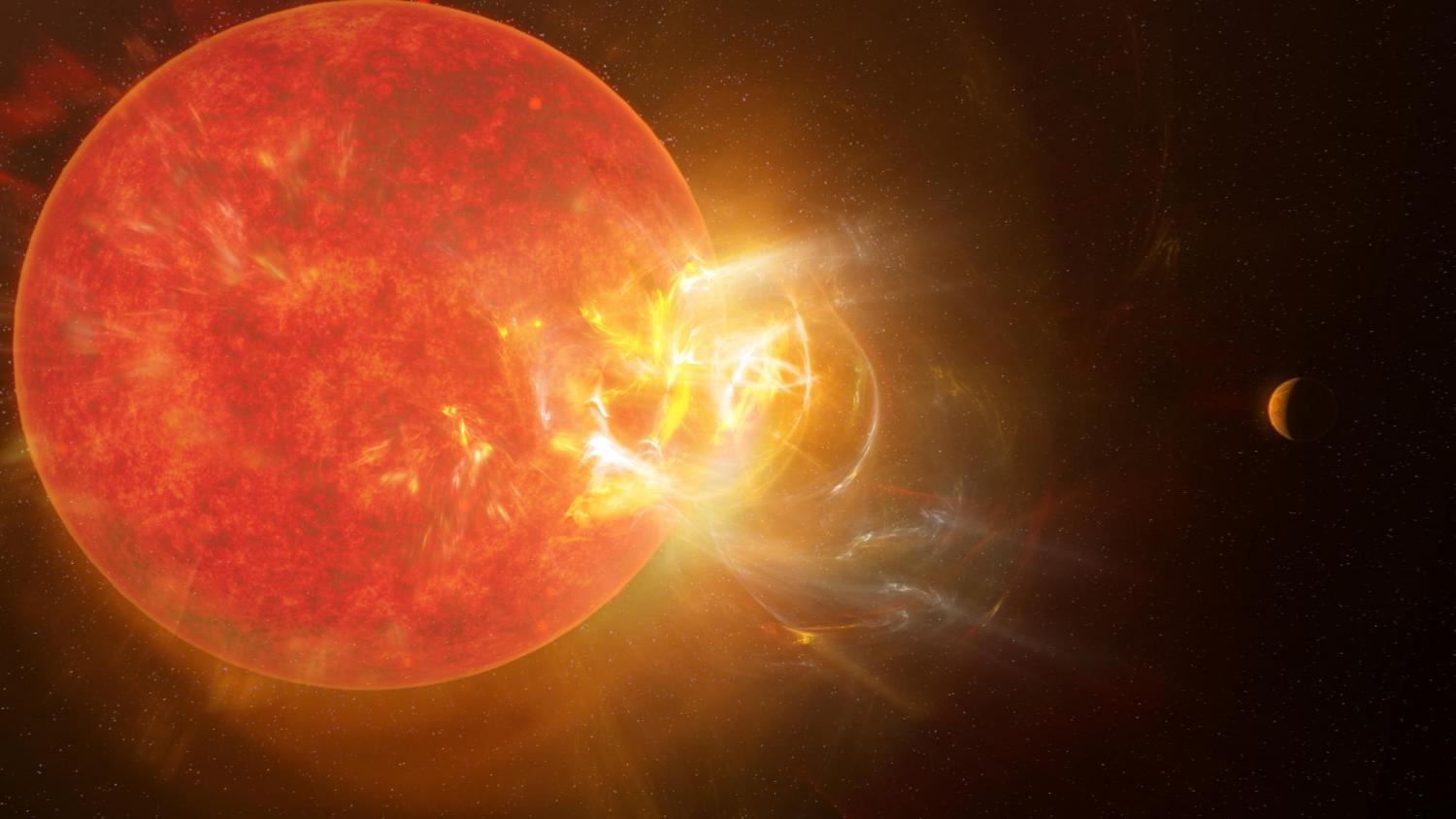

When reconnection takes place at the null point or the separatrix layer, flare emissions at the footpoints of the fan field lines would constitute a closed or open circle-like flare ribbon. The dome-shaped fan portrays the closed separatrix surface, and the inner and outer spine field lines in different connectivity domains meet at the null point. Magnetic field lines associated with a 3D null point usually display a fan-spine configuration 26, 27. Nevertheless, many flares take place in a more complicated three-dimensional (3D) structure, such as magnetic configurations containing 3D null points. The morphology and evolution of flare ribbons have been interpreted in terms of the classical two-dimensional flare model called the CSHKP model 22, 23, 24, 25. The elongated structures of solar flare emissions in the chromosphere are called flare ribbons. In spite of this diversity in physical parameters, study of solar white-light flares can provide a reference for study of stellar flares. The stellar flares can be 10–10 7 times more energetic than the solar white-light flares 19, 20, since there is a big diversity in the magnetic field and flaring area on the stellar surface 21. Interestingly, many white-light flares have been observed on dKe/dMe stars by the Kepler mission 18. Therefore, how the energy is transported to the lower atmosphere to produce the white-light emission has always been an open question 16, 17. On the other hand, the energy release is often considered to take place in the corona. It is generally believed that the continuum emission of white-light flares comes mainly from the lower chromosphere down to the middle photosphere. However, type II white-light flares appear less frequently and do not display the above features 11, 12, 13, 14, 15. Besides, the Balmer lines are usually strong and broad. For type I white-light flares, there is a good time correlation between the maximum of the continuum emission and the peaks of the hard X-ray (HXR) and microwave emissions, and there exists a strong Balmer jump in the spectra. The different characteristics of each type were studied by using both observations and atmospheric modeling 10. White-light flares are classified into two different types, types I and II 9. But in a few cases, enhanced emission is also observed in the infrared continuum 5, 6, 7, 8. Traditionally, enhanced white-light emission is detected in the Balmer and Paschen continuum. However, the number of reported white-light flares only occupies a small fraction of the total number of solar flares observed so far. The flare observed for the first time in 1859 was actually a white-light flare 4. These flares are called white-light flares 3. In very few cases, solar flares can also show an enhanced emission at the visible continuum, besides the enhanced spectral lines that are formed in the chromosphere and above. Solar flares result from a sudden release of magnetic energy in the solar atmosphere 1, 2.


 0 kommentar(er)
0 kommentar(er)
